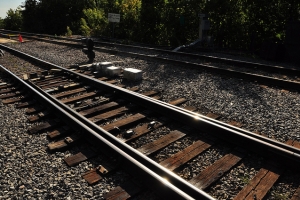Support migrant centric journalism today and donate

Rural communities in Manitoba, Canada are experiencing immigration growth, despite recent statistics showing a marked decrease in Manitoba's population.
In the first three quarters of 2005, 17,867 Manitobans left the province for other parts of Canada while 11,656 people moved to the province, according to Statistics Canada. But thanks to a successful government program, the population drain isn't as bad as it could be.
In 2001, Manitoba started an initiative called the Provincial Nominee Program for Skilled Workers, created to energize the province's lethargic immigration numbers.
The program sponsors skilled workers from other countries who have obtained job offers in the province to become landed immigrants. Gerry Clement, the assistant deputy minister for Manitoba Labour and Immigration, says the program has helped lessen the impact of losing workers to Alberta and British Columbia.
"From an immigration front, we've almost tripled in the last five years," Clement said. "In 2000 when we started, immigration was 3,600 people per year. This year we've reached over 8,100. Our objective is to achieve 10,000 over the next couple years as an annual immigration."
While most new immigrants are settling in urban areas like Winnipeg and Brandon, a good chunk are moving to rural Manitoba. "Essentially 30 per cent of our provincial nominee movement, out of 4,600 individuals we sponsor every year ... close to 2,000 are destined to rural Manitoba."
Clement said the number of immigrants continues to grow as people who have settled in the province encourage other family members to join them.
Most of the new immigrants to Manitoba are from the Philippines, Germany, India and China. Rural towns like Russell and Killarney are only just starting to look at ways to attract immigrants, but Kola, just west of Virden, and Eastman communities like Winkler, Altona and Steinbach, have taken advantage of their agriculture base to create jobs and hire foreigners for those positions.
"There's a really significant movement of Germans to Manitoba. Many share a common history — many are Mennonites who were in Europe or stuck behind in Russia. They have relatives here going back a generation or two."
Dale Banman, the community development officer for Killarney and the RM of Turtle Mountain, has been in contact with several German families looking to move to the community.
Unlike many small towns in rural Manitoba, Killarney hasn't experienced a population decline. But the move to bring in new people is to support the burgeoning economy, and the need for carpenters and construction workers is very high.
"We're having a problem, especially in spring. We have to look very hard to find employees. There's definitely a need in the community."





















